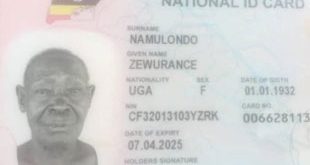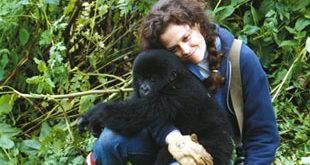
By Ronald Musoke
The massacre of African elephants that have been going on in Africa for decades and have escalated to record levels over the last 30 years have been linked to religious practices on the Asian continent.
This alarming rate, according to the Society for Conservation Biology—a global community of conservation professionals— can be traced to the demand for ivory for religious artifacts, trinkets, and other purposes in Asia, which, if unchecked, could reduce the African elephant to small isolated populations, some of which will disappear altogether over the next two to three decades.
However, in addition to the ethical concerns raised by the possible extinction of elephant populations or species, the ivory trade is associated with considerable bloodshed for humans as well as elephants.
According to a statement released by the Society for Conservation Biology on Jan.24, the market demand for elephant ivory is very big in The Philippines, Thailand and China.
Estimates show that more than 25,000 elephants are poached annually in the African continent mostly coming from Central Africa—a region rife with violence some time resulting from the Ivory trade.
For many Filipino Catholics, the use of ivory is believed to reflect one’s level of adoration of and piety to God and although fiberglass and wood are substitutable materials, ivory is most preferred because the monetary investment in a statue is considered a measure of one’s devotion.
In Thailand, Malaysia and Singapore, a parallel belief is held among Budhist followers regarding the use of ivory-crafted amulets blessed by Budhist monks. The use of these amulets is believed to bring luck and protection against black magic.
In China, ivory statues are seen as a financial investment since ivory is considered a more precious material than gold.
Ivory is also channeled into other markets.
Last year, there was a seizure of more than US$ 2m worth of illicit ivory items. The ivory which finds its way into the US market is used to make small jewellery, animal statues and carved tusks, although Asia takes a larger share of the demand for ivory.
But the key concern for the Society for Conservation Biology is that elephants are not the only casualties from illegal ivory trade.
In conflict zones where anti-poaching campaigns are launched, especially in Central Africa, hundreds of people have been killed as a result of fighting between poachers and park rangers.
Ivory has been reported to be financing local conflicts, and could be financing international terrorism groups like that Al Qaeda, and Joseph Kony’s Lord’s Resistance Army.
The conservation NGO is encouraging religious leaders in these Asian countries to issue public statements on the severity of the ivory trade and the direct and negative impact that the religious use of ivory has on elephant populations and local communities and where appropriate on the relevant teachings of the religious, such as teachings concerning practicing stewardship of creation.
 The Independent Uganda: You get the Truth we Pay the Price
The Independent Uganda: You get the Truth we Pay the Price


